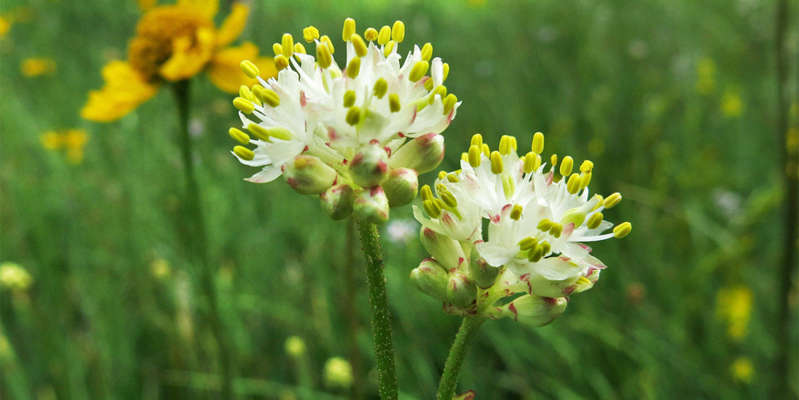
Insect-eating predatory plant discovered in North America
In the wetlands of the west coast of North America, a carnivorous plant has been discovered that periodically preys on insects. The species is called Triantha occidentalis, according to the Proceedings of the National Academy of Sciences.
Research has shown that the plant uses insects to pollinate flowers. But below on the stem are sticky hairs intended for catching pollinators.
Scientists noted that carnivorous plants are not very rare. At the moment, about 500 such species are known. But Triantha occidentalis has a unique structure. This is the 12th known case of the evolution of a common plant into a carnivorous plant and the first for the order Alismatales.
Typically, carnivorous plants appear in nutrient-deficient regions. If they cannot get enough nitrogen and phosphorus from the soil, they start using other food sources.
Scientists at the University of Wisconsin at Madison analyzed nitrogen-15 levels in Triantha occidentalis samples. This substance is found in the organisms of fruit flies. It turned out that carnivorous plants contain more nitrogen than their counterparts. Research has shown that 64% of the nitrogen they get from eating flies.
Most carnivorous plants have flowers, but they are usually located far from the “feeding apparatus” for catching and digesting insects. So, the Venus flytrap has a very long stem. But in the case of Triantha occidentalis, both the flowers that need pollination and the sticky hairs are very close.
“At first glance, it looks like a conflict between carnivorousness and pollination, because it is impractical to kill the insects that help you reproduce,” the scientists noted.
But they managed to reveal this secret. The hairs of Triantha occidentalis can only catch small midges. Large bees and butterflies do not fall into his captivity and continue to perform the function of pollination.
Scientists noted that the carnivorous plant grows near large cities. They suggested that in this ecosystem there may be other, not yet known to science, “predators”.
Earlier it was reported that an underground parasite plant was found in Malaysia. It is endangered.

